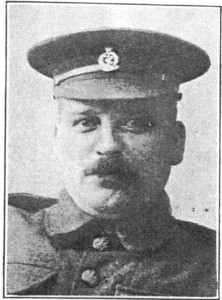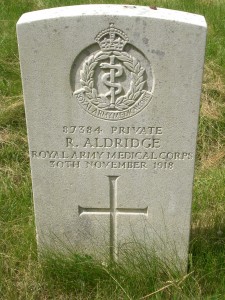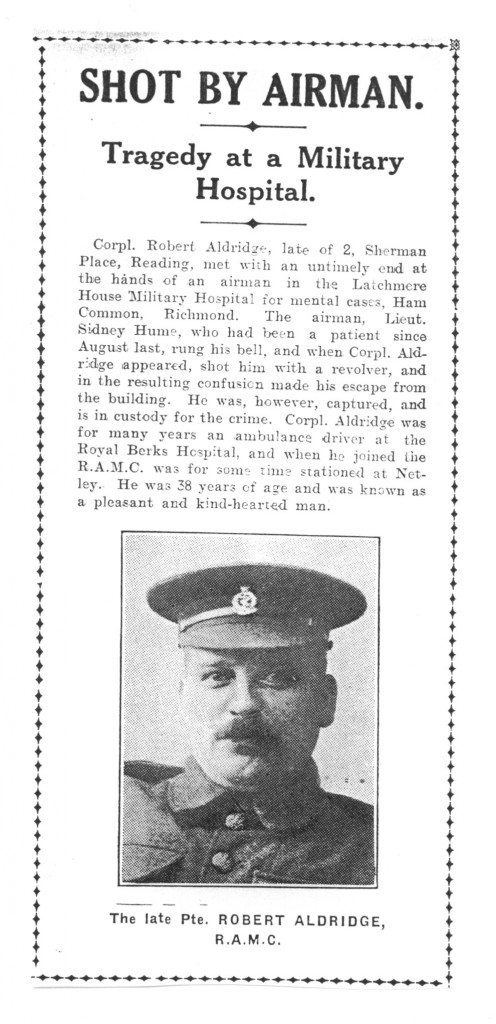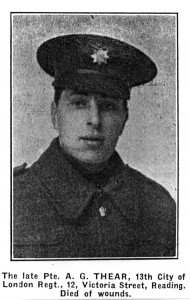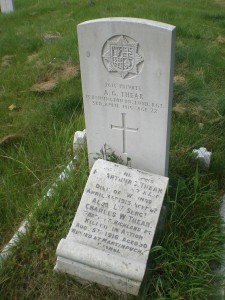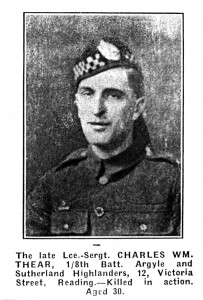Sergeant. R. John Brill
3461 2nd/4th Royal Berkshire Regt.
transferred to (224543) 251st Div.,
Employment Coy., Labour Corps.
Division 17
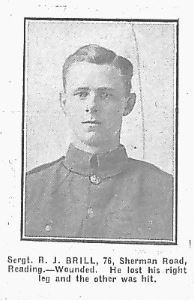 |
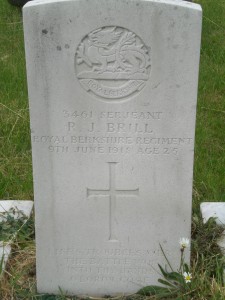 |
John Brill, was the son of Frederick William and Ruth Brill, 76, Sherman Road, Reading. He died 9th June 1918 of wounds received on March 21st 1918, aged 25 years. His parents may have referred to him as “Reg”. A relation, Jan Brown, who has contacted the site states that his name was actually Reginald Jessie Brill.
Sergeant Brill was wounded in action loosing his right leg, the other was also hit. A native of Reading R J Brill joined up when war started, prior to this he worked for Messers. Bradley and Bliss. He saw over two years service in France. Educated at St. Giles school and the Bluecoat School. An active member of the A.O.F., being associated with the Court of Sherwood Forest and was a member of the Spring Garden (Prize) Band. He was buried with full military honours.
The grave number is 17. 3555 and is marked with a CWGC war pattern headstone and kerb stone surrounds.
Sergeant Brill had two brothers. They are not commemorated on his grave but information about them was obtained from the newspapers of the time.
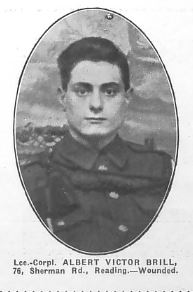 |
L.Corpl., 15256, Albert Victor Brill had been employed by Phoenix insurance prior to the war. He eventually reached the rank of Company Quarter Master Sergeant. He survived the war to later marry and have two sons. He was wounded at least three times, once during the Battle of Loos. He died in 1949.
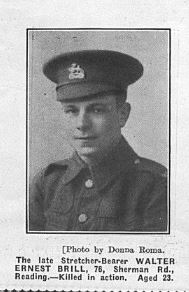 |
Pte. 12854, Walter Ernest Brill, the 3rd son, was a stretcher bearer in 6th Royal Berkshire Regt. He was killed in Action 19th July 1916 Aged 23 years. A letter from an officer was published in the Reading Standard September 2nd 1916
“I cannot tell you exactly where your son met his death. He was engaged in carrying a wounded man to the rear when a shell struck the stretcher and your son was killed instantly. I can vouch for this, as he was seen by a runner who was afterwards wounded, and I received the news from several men in the company that it occurred on July 19th in _____Wood. No one in the magnificent battalion did better than he as a stretcher-bearer. You have my sincerest regrets for the loss of your boy”.
The death of Frederick William Brill (father of the Brill boys) after a short illness – aged 54 years, was notified in the Reading Standard September 27th 1919. William Brill had worked in the Huntley and Palmers Biscuit Factory. In the 1911 census return, he described his occupation as “Biscuit factory shooting off biscuits”!
